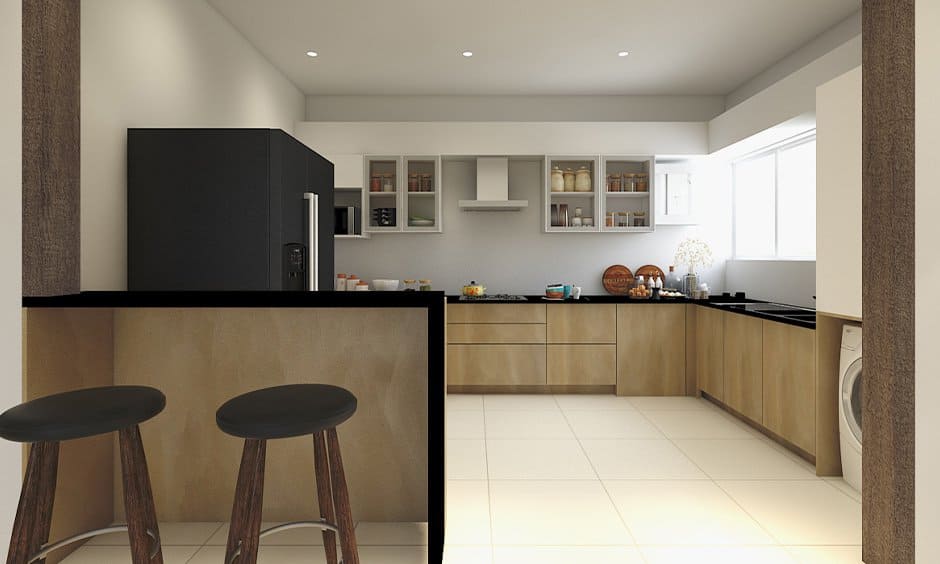Introduction
In today’s fast-paced world, our kitchens are evolving beyond mere spaces for meal preparation. With the advent of smart technology, the kitchen is becoming the hub of convenience, efficiency, and innovation. Modern smart kitchen designs seamlessly integrate technology to enhance functionality, simplify tasks, and elevate the overall cooking experience. This guide will explore the key components of smart kitchen design, highlighting the latest innovations and offering insights into how these technologies can transform your culinary space.
Understanding Smart Kitchen Technology
The Concept of a Smart Kitchen
A smart kitchen leverages advanced technology to improve efficiency and convenience. This typically involves integrating appliances and systems that can be controlled remotely, offer real-time feedback, and adapt to the user’s needs. From voice-controlled assistants to smart refrigerators, the aim is to create a connected and intelligent environment that simplifies daily tasks.
Key Technologies in Smart Kitchens
- Smart Appliances: These include refrigerators that can monitor inventory, ovens that can be preheated remotely, and dishwashers that optimize water usage based on the load. These appliances often come with app integration, allowing users to control them from their smartphones.
- Voice Assistants: Devices like Amazon’s Alexa or Google Assistant can manage kitchen tasks through voice commands. They can set timers, provide recipe guidance, and even control other smart devices in the kitchen.
- IoT Integration: The Internet of Things (IoT) connects various kitchen devices, enabling them to communicate and work together. For example, a smart fridge can sync with a meal planning app to suggest recipes based on available ingredients.
- Smart Lighting and Climate Control: Automated lighting systems adjust based on the time of day or activity. Similarly, smart thermostats and ventilation systems maintain optimal kitchen conditions, enhancing comfort and energy efficiency.
Design Considerations for a Smart Kitchen
Space Planning and Layout
Effective space planning is crucial in a smart kitchen design. Consider the flow of movement between key areas like the cooking zone, cleaning zone, and storage zone. Smart design often includes built-in features that optimize these workflows, such as automated drawers and touchless faucets.
Integration of Technology
When incorporating technology, ensure that devices are seamlessly integrated into the kitchen’s aesthetic. For instance, smart appliances should match the kitchen’s design and not detract from its visual appeal. Hidden panels and minimalist designs often work well to maintain a sleek look.
User-Friendly Interfaces
One of the primary goals of smart kitchen technology is to simplify tasks. Therefore, interfaces should be intuitive and easy to use. Touchscreens, voice controls, and mobile apps should offer straightforward navigation and clear instructions.
Sustainability and Energy Efficiency
Modern smart kitchens often emphasize sustainability. Energy-efficient appliances, water-saving fixtures, and waste management systems are integral to reducing the kitchen’s environmental footprint. Smart technologies can monitor and adjust energy usage, promoting more sustainable practices.
Benefits of a Smart Kitchen
Enhanced Convenience
Smart kitchens offer unparalleled convenience. Automated features, such as programmable ovens and self-cleaning appliances, save time and effort. Remote access allows for easy control of appliances, even when you’re not at home.
Improved Efficiency
Technology in smart kitchens can significantly boost efficiency. Smart appliances often have sensors that optimize cooking times and temperatures, while connected devices can track inventory and suggest shopping lists, minimizing waste.
Greater Safety
Safety is another advantage of smart kitchens. Features like automatic shut-off for stoves, smart smoke detectors, and real-time alerts help prevent accidents and ensure a safer cooking environment.
Personalized Experience
Smart kitchens can be tailored to individual preferences. From custom cooking modes to personalized recipe suggestions, these technologies adapt to your lifestyle, making cooking more enjoyable and aligned with your tastes.
Conclusion
The integration of smart technology into kitchen design is more than just a trend; it’s a transformative shift that enhances functionality, efficiency, and user experience. By understanding and implementing these advancements, you can create a modern smart kitchen that not only meets your culinary needs but also aligns with your lifestyle and sustainability goals. As technology continues to evolve, the potential for further innovations in kitchen design is limitless, promising even greater convenience and efficiency in the future.


